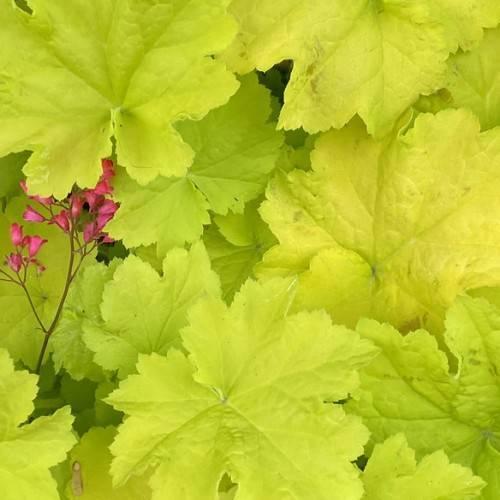
coral bells
Heuchera 'Citronelle'
Cycle:
Herbaceous Perennial
Watering:
Average
Hardiness Zone:
4 - 8
Flowers:
Flowers
Sun:
Full sun,part shade
Leaf:
Yes
Growth Rate:
Low
Maintenance:
Moderate
Drought Tolerant:
Yes
watering
Coral bells should be watered regularly and deeply. In general, they should be given 1 inch of water per week. However, in summer months, they may need water more frequently - every 4-5 days, depending on your local climate and how well-draining your soil is. Make sure the entire root system stays moist, but not soaked. During cooler months, you can water your coral bells less frequently. Allow the soil to dry slightly between waterings. If your coral bells are in a container, you will need to water more frequently since they will dry out faster. Check the container frequently and water as needed.
sunlight
Coral bells (Heuchera 'Citronelle') need full to partial sun to grow and thrive. It is best to keep the plant in an area that receives at least 3 to 4 hours of sunlight each day. Morning sun is ideal, as this will allow the plant to dry out quickly to prevent mold and fungal diseases. Too much direct afternoon sun may cause the foliage to burn. It's best to avoid locations in close proximity to trees or other structures that will shade the plant and limit its sun exposure.
pruning
Coral bells (Heuchera 'Citronelle') should be pruned once a year in early spring before new growth begins. Pruning should be done lightly to remove any dead, diseased or damaged foliage and stems. Since coral bells have a tendency to spread rapidly, trimming back any overgrown or runaway stems to keep the plant in its desired shape is also recommended. When pruning, take care not to remove more than 1/4 of the plant's foliage to prevent damage. Doing this yearly helps ensure that coral bells look their best and remain healthy for years to come.
